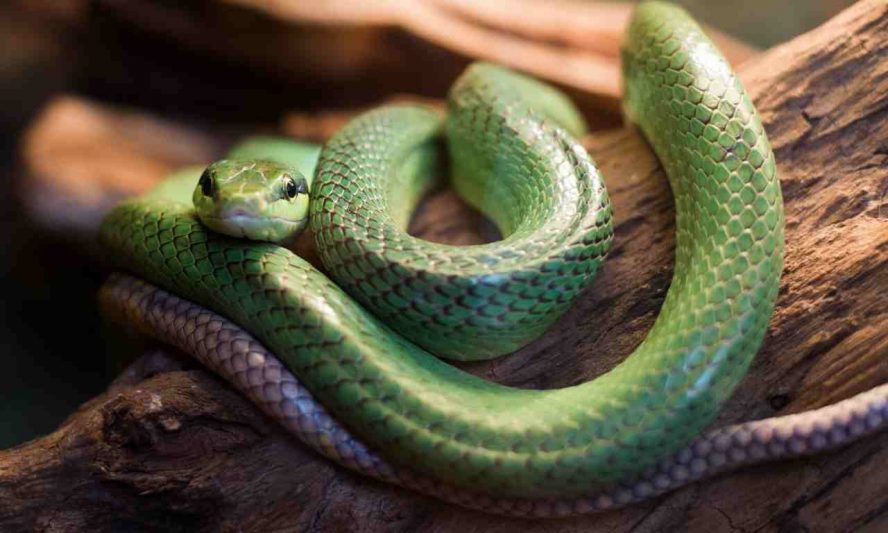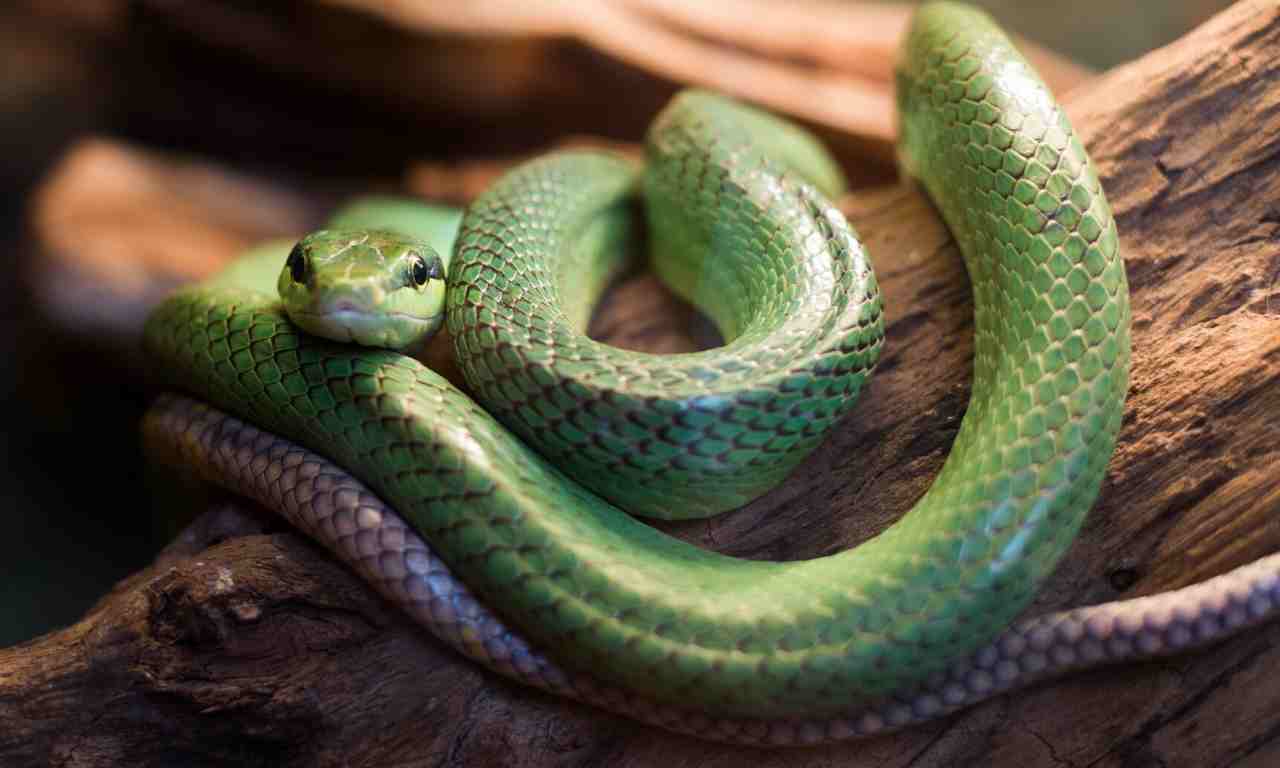 Snakes are fascinating creatures, and they are one of the best predators. Snakes can strike at a fantastic speed with absolute precision which baffles even scientist. But how they do it if they can’t see colour?
Snakes are fascinating creatures, and they are one of the best predators. Snakes can strike at a fantastic speed with absolute precision which baffles even scientist. But how they do it if they can’t see colour?
So can snakes see colour? Some snakes can see two colours, i.e. blue and green, some snakes see infrared. It varies from species to species. Snakes have rods and cones in their eyes which have receptors proteins known as opsins. These tow elements react to light. Cones gives the perception of colour. How snakes use these varies from species to species.
Continue reading to know in details.
What Is Colour?
The reality that we see has colour in it, but we cannot see all of the colours. Every complex living being sees colour based on the development of their receptors.
There are so many different rays. Some animals can see these rays better than others.
The way an animal sees the world can be completely different the way we see it. There are light receptors in everyone eye that send messages to our brain, and then we perceive colour.
We only see the colours reflected from this object. There are many colours, but the object absorbs most of them. Now some animals can see other colours.
Some animals see black and white. It depends upon the light receptors present in the eyes.
How Do Snakes See?
Snakes see because of the rod and cones present in their eye. This rods and cones are present in all creatures that can see.
Snakes are also the same. However, the clarity of the vision varies from species to species.
Not all snakes can see clearly. Some snakes have a fuzzy vision. Snakes that hunts in daylight can see clearly in daylight, but snakes that live in burrow cannot see very clearly in daylight.
Some snakes are nocturnal, and they are great predators at night, but they cannot perform so well in the day. Their other senses manage this lack of proper vision to some extent.
So if they see any prey close to them, then they can strike with precision with the help of their extra senses.
That being said even with all the senses nocturnal snakes are not that effective in the day compared to snakes that hunt in the day and snakes that hunt only in the day cannot hunt in the night.
Some snakes rely more on their extra senses compared to their eyesight. Those senses are so remarkable that those snakes don’t require proper vision to hunt.
They can strike precisely with the help of those extra senses. Some snakes can also see infrared, which is a great ability, and it helps them to hunt during the night.
These snakes have sensory pit which allows them to sense the heat emitted by the body. This ability helps them to identify the size and what kind of animal it is.
Snake’s Infrared Vision
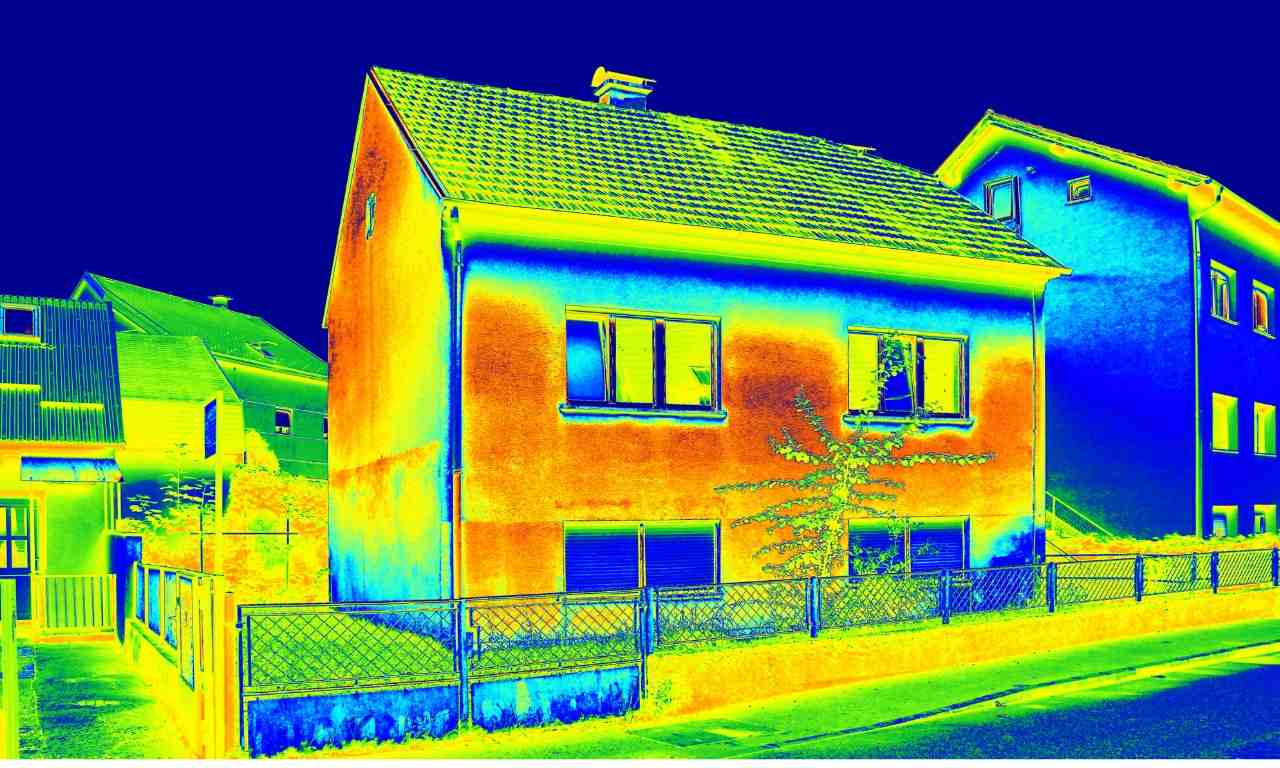 Every living organism generates heat from their body, and that heat is visible as a combination of red, orange etc. In an infrared vision, a cold object looks blue.
Every living organism generates heat from their body, and that heat is visible as a combination of red, orange etc. In an infrared vision, a cold object looks blue.
Snakes have a pit organ which allows them to see heat signature at a wavelength of 5 – 30 micrometre.
The infrared vision is present among pythons, boas and pit vipers. Snakes can see it; that’s why they can identify the spot which they are going to target and make a calculated estimation on how to target.
These snakes have pit organs which help to sense the heat from warm bodies.
They can clearly differentiate the size of an object through infrared vision.
Since snakes can see infrared, scientists say not to keep them in sacks and carry them because they can see the heat emitted from human hands and body parts as the human is holding the sacks.
And if the snake gets an opportunity, the snake can bite the person, which can be deadly.
Can Snake See If You Don’t Move?
Some snakes have an infrared vision. They can see the heat radiating from everybody. And because of that, a snake can see even if a person is standing still.
Apart from pythons, pit viper and boas other snakes have a fuzzy vision. They cannot see very clearly, but that said snakes are still considered the best predators.
It doesn’t matter whether you are standing still or moving around snakes can see you.
But the snake won’t attack you until they are provoked or hungry. This is a fundamental nature among all reptiles and animals.
Does The Colour Of The Snake’s Eye Indicate The Colour They Can See?
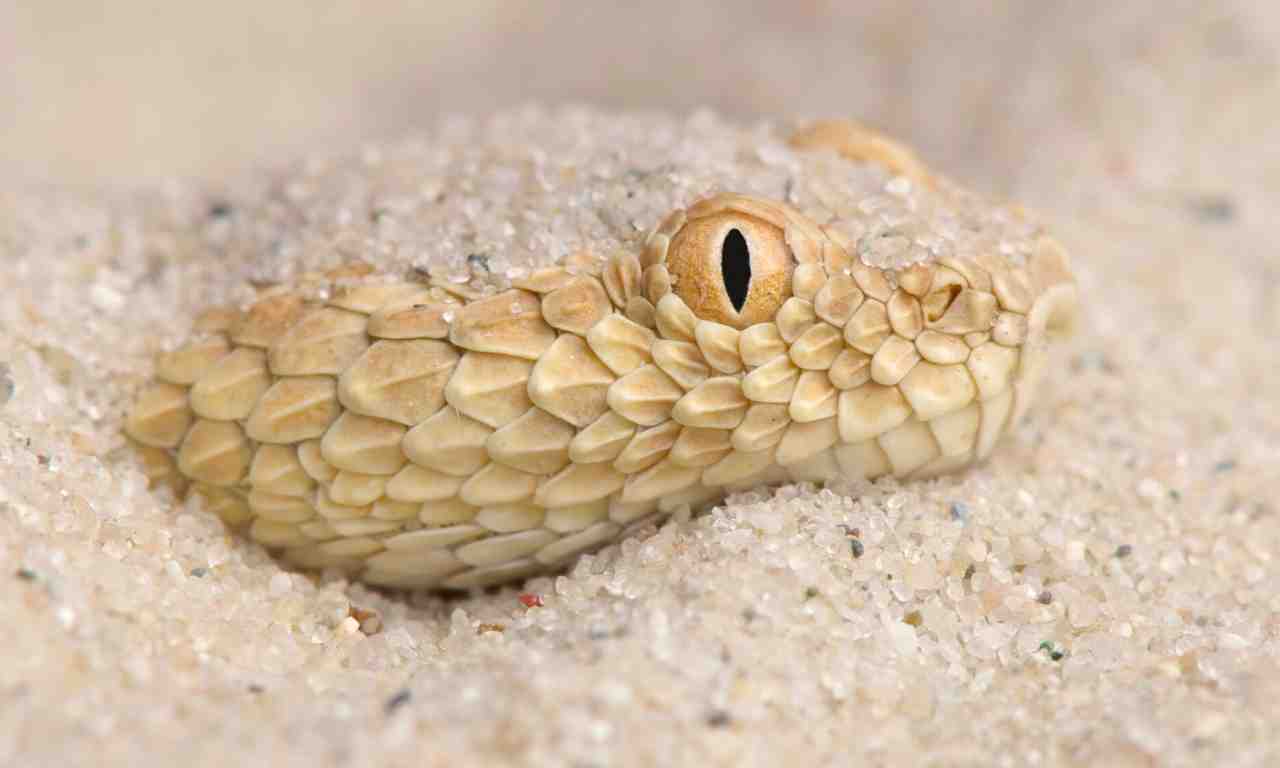 Snakes eye colour and pattern varies from snake to snake, but that does not mean they can see that colour.
Snakes eye colour and pattern varies from snake to snake, but that does not mean they can see that colour.
The eye colour just gives a snake it’s own unique identity which can help you to identify the snake. Apart from that, the eye colour doesn’t provide any other benefits.
Who Do Some Snakes Has Slit Pupil And Some Has Round Pupil?
Most poisonous snakes have slit pupil whereas most non-poisonous snakes have round eyes.
Although there can be exceptions, this is a clear indication. You can identify whether a snake is poisonous or not just by looking into the eye.
Apart from that slit pupil allows them to see in low light conditions. Snakes that are active only in the morning doesn’t need slit pupil.
There is enough light in the daytime; however, a snake that hunts at night will need slit pupil as that will help them to see better in the dark.
Can Slit People Snake See More Colour?
Slit pupil allows more light to enter through the pupil, thus enabling the snake to hunt in the dark.
Slit pupil snakes cannot see more colours. To see more colour, snakes should have improved rods and cones.
Some snakes have fuzzy vision, some snakes see infrared and some snake see colour better than other snakes. It varies from species to species.
The way the snake has evolved, the lifestyle of the snake contributes to the development of their vision.
By that, I mean a snake that lives in dark places can only hunt at night because the evolution of that snake gave the ability to hunt in the dark and live in the dark.
Other snakes evolution gave them the ability to hunt in the day, but they cannot hunt in the dark. Now, this thing was decided millions of years ago.
The environment and the circumstances bought the development in the snakes.
As you know, snakes can be found all across the globe, and every place has a different climate and situation.
To adapt to these changes, snakes have developed specific traits which are unique to the species. It means what they eat, how they see, and how they hunt dramatically varies.
The Origin Of Snake Vision
Snakes vision varies significantly from species to species. The ancestor of all snakes had UV filter which is still visible in some snakes that hunt in the day.
This filter allows them to stop the UV rays and makes their vision sharper.
Some snakes have a binocular vision which is a kind of vision that allows a snake to focus both of their eyes into one object.
This vision is uncommon. Snakes that hunts in the daytime gets a better view of the world compared to snakes that hunt in the night.
Are Slit Pupil Snake More Dangerous?
Poisonous snakes are identified with slit people, but there are exceptions. Slit pupil looks freaky, but it doesn’t always mean more dangerous.
There are poisonous snakes that roam around in daylight, and they have a round pupil.
Slit pupil allows a snake to see somewhat clearly in the dark. The design or the length of the slit pupil doesn’t determine how poisonous the snake is.
Kids usually have this idea that the slit eye snake is more dangerous because they look dangerous.
Of course, they are poisonous, and they can kill humans, but they are not dangerous because they have slit pupil.
Slit pupil snakes cannot see very clearly in the daytime because they are habituated with hunting in the dark.
Snakes can be lethal when provoked, so make sure to be careful when you see them regardless of whether a snake can see you or not.
Some snakes can also attack when hungry like Python, Anaconda etc.
Are Snakes Blind?
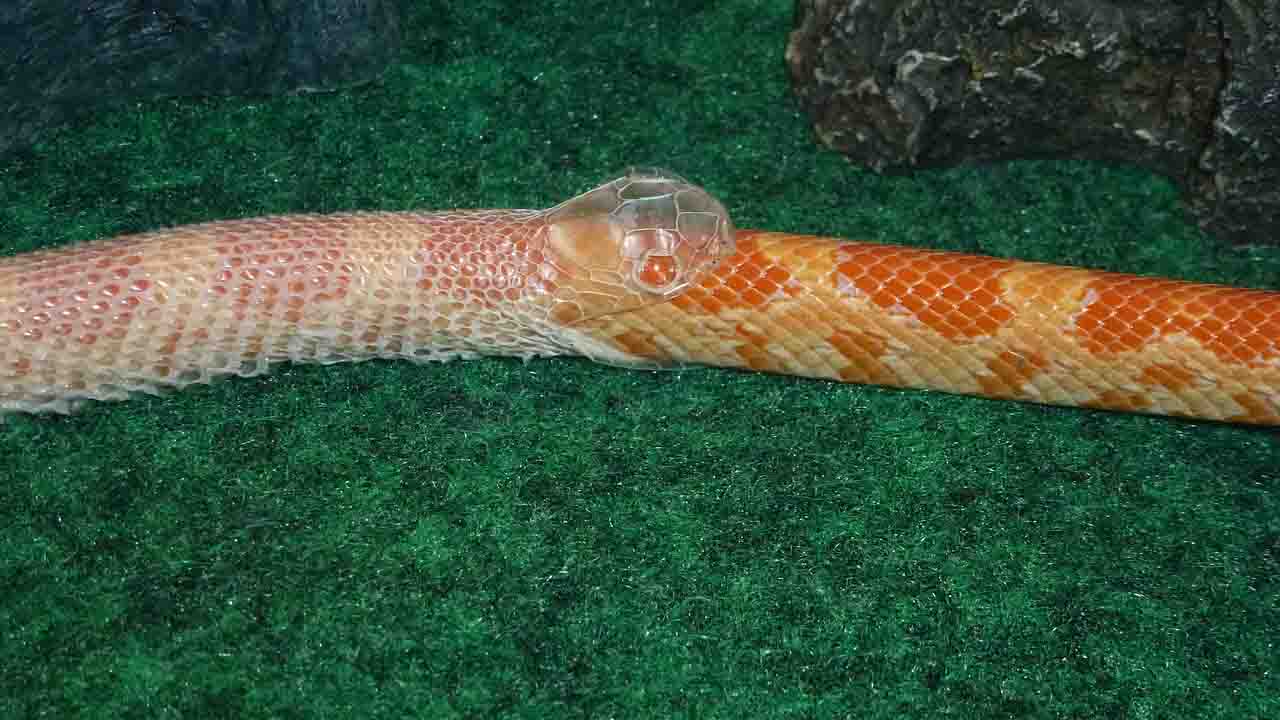 No snakes are not blind, but they lose their sight temporarily when they are shedding.
No snakes are not blind, but they lose their sight temporarily when they are shedding.
Their ocular scale and the protective scale starts separating during shedding. As soon as the new ones develop, they start seeing again.
During this time a snake becomes somewhat vulnerable. If a predator attacks a snake, then it can kill the snake.
But it won’t be that easy because apart from eyes they have other senses that allow identifying any threat.
Conclusion
Snakes vision varies from species to species. Some snakes can see infrared, some can see colour, and some have a fuzzy vision. Snakes are not blind, but after shedding, they can temporarily go blind.
Snakes are one of the deadliest predators so never underestimate them because some of them have bad vision.
They have very advanced sensory organs which allow them to strike someone precisely.
Slit eye itself does not mean more dangerous. Snakes have slit eyes to see more precisely in the dark.
Not all snakes have slit eyes. Snakes that hunt on daytime doesn’t require slit eyes as they can see clearly.
Welcome to my blog. I have been doing pest control for years since my house, garden and pets were always attacked by various kinds of pests and as a result I had to know proper pest control techniques that works. In this blog I share all the tips and tricks that I know and I hope you’ll find it helpful.

